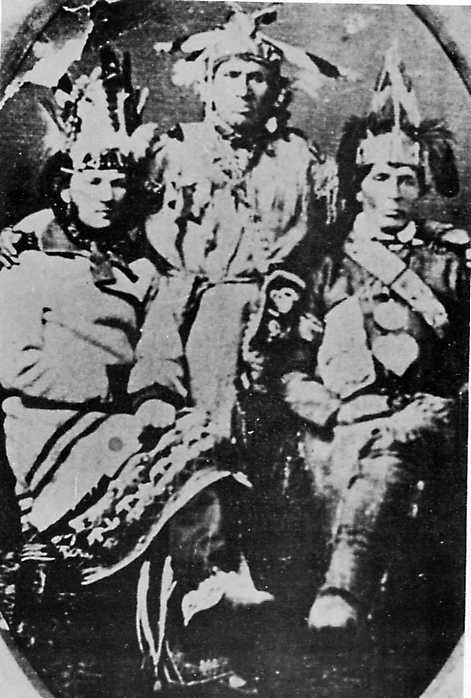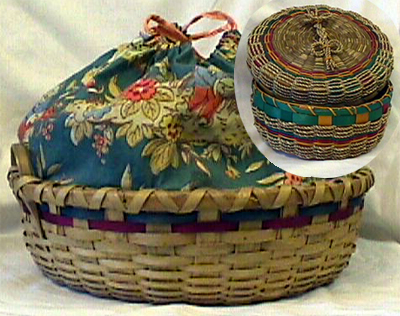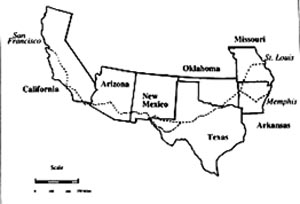|
Sept.
6, 1689:
|
Two
hundred Indian survivors of King Philip's War have found refuge
with the local Indians around Cochecho (modern Dover), New
Hampshire. Boston wants the Indians back in Massachusetts.
Local settlers have signed a treaty with the local Indians.
In what local legend calls a mock battle, forces under Richard
Walderne (Waldron) surround the local and refugee Indians.
They remove the 200 refugees and march them back to Boston.
In Boston, most of the Indians are killed or become slaves.
|
|
|
Sept.
7, 1957:
|
An
Act of Congress gives the Chilkat Indians mineral rights to
their lands near Klukwan. They are one of only a very small
number of Alaskans with this provision.
|
|
|
Sept.
8, 1535:
|
Cartier
reaches Stadacone, where the modern city Quebec is located.
|
|
|

Probably
the Robinson Treaty photo of 1850 showing William B. Robinson,
Treaty Commissioner
on the left, Chief Shingwauk (1773-1854) centre, and Chief
Nebenaigooching (1808-1899) on the right.
|
|
Sept.
9, 1850:
|
The
"Robinson Treaty with the Ojibewa Indians of Lake Huron
Conveying Certain Lands to the Crown" is signed in Canada.
|
|
|
Sept.
10, 1683:
|
Susquehanna
Chief Kekelappan sells William Penn half of his lands between
the Susquehanna and the Delaware River.
|
|
|
Sept.
11, 1855:
|
A
treaty is signed between the United States and the Mohuache
Band of Utah Indians.
|
|
|

Age
& artist unknown.
Ash sewing basket with handles & cloth drawsting
top, approx. 14 inches in diameter.
The smaller basket has been kept inside the larger one,
protecting it from fading in the sunlight. Hong Kong
Cord is used instead of sweetgrass braid. The handle
is also Hong Kong Cord. Sweetgrass is woven into the
center of the cover.
|
|
|
Sept.
12, 1675:
|
In
Maine, according to settlers' records, the Abenaki attack
John Wakely's farmhouse in Falmouth. Seven people are killed,
two are taken captive.
|
|
|
Sept.
13, 1815:
|
William Clark, Auguste Chouteau, Ninian Edwards
hold a conference at Portage des Sioux, Missouri (St. Charles
County). They get Missouri Sauk and Foxes to promise not to
join up with the Rock Island Sauks or to fight the U.S.
|
|
|
Sept.
14, 1777:
|
Spanish
Governor Galvez issues an act, in New Orleans. He orders the
military, and Spanish subjects to "respect the rights
of these Indians in the lands they occupy and to protect them
in the possession thereof."
|
|
|

John Butterfield and company ran the U.S. mail
stagecoach between Missouri and California. This trip covered
2,800 miles and was know as the "ox-bow route" which
had to be completed in 25 days.
|
|
Sept.
15, 1858:
|
The
Butterfield Overland Mail route begins operation from St.
Louis, Missouri and Memphis, Tennessee, through Fort Smith,
Arkansas, to San Francisco, California. Contrary to many movie
storylines, the mail is attacked by the Apaches only one time.
|
|
|
Sept.
16, 1893:
|
100,000 people participate in the "run"
for land in the recently purchased Cherokee Strip of Indian
Territory (present day Oklahoma). The Cherokees were pressured
into selling the land to the Federal Government.
|
|
|
Sept.
17, 1778:
|
The
Delaware sign a treaty (7 stat. 13). Delaware Principal Chief
Koquethagechton (White Eyes) is appointed as a Colonel at
the treaty signing. He works to see the Delaware Nation become
the 14th American State. The treaty is signed in Pittsburgh,
by three Chiefs: White Eyes, The Pipe, and John Killbuck,
and Andrew and Thomas Lewis.
|
|
|
Sept.
18, 1823:
|
Thirty-one Seminoles sign a treaty (7 stat.
224) on Moultrie Creek in Florida, with the United States.
Six Chiefs are given large estates to get them to agree to
the treaty. Those chiefs were: John Blunt, Eneah Emathla,
Emathlochee, Tuski Hadjo, Econchattemicco, and Mulatto King.
The Seminoles give up lands north of Tampa Bay, and return
runaway black slaves. They receive an annuity of $5000. The
lands set aside for the Seminoles are poor, at best. The Americans
are represented by James Gadsden.
|
|
|
Sept.
19 , 1737:
|
Today
is the start of the walking for the "Walking Purchase"
from the Delaware. The walkers are Solomon Jennings, Edward
Marshall, and James Yates. The "walkers" barely
stay below a run. By the next day at noon, Edward Marshall
has covered sixty-five miles. Yates, who passes out from the
exertion, dies three days later. Jennings gives up the first
day and is sickly for the rest of his life. Many Indians complain
the "walk" does not live up to the spirit of the
agreement.
|
|
|
|
|
|
|




